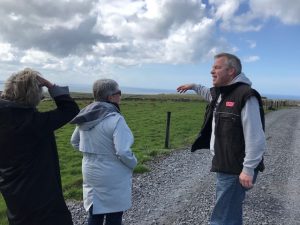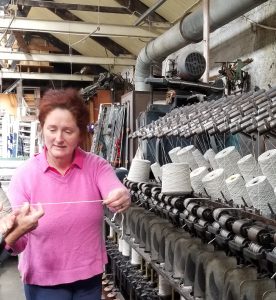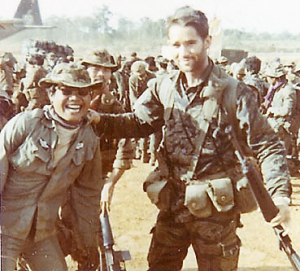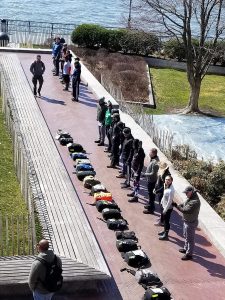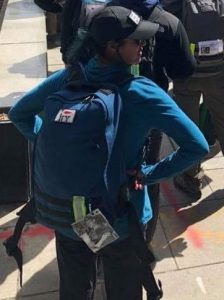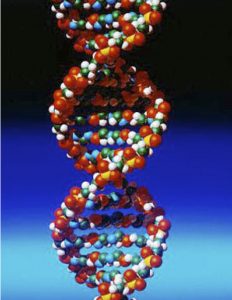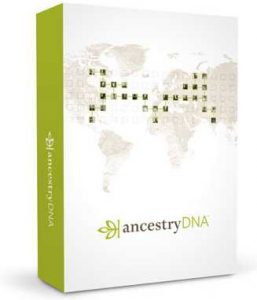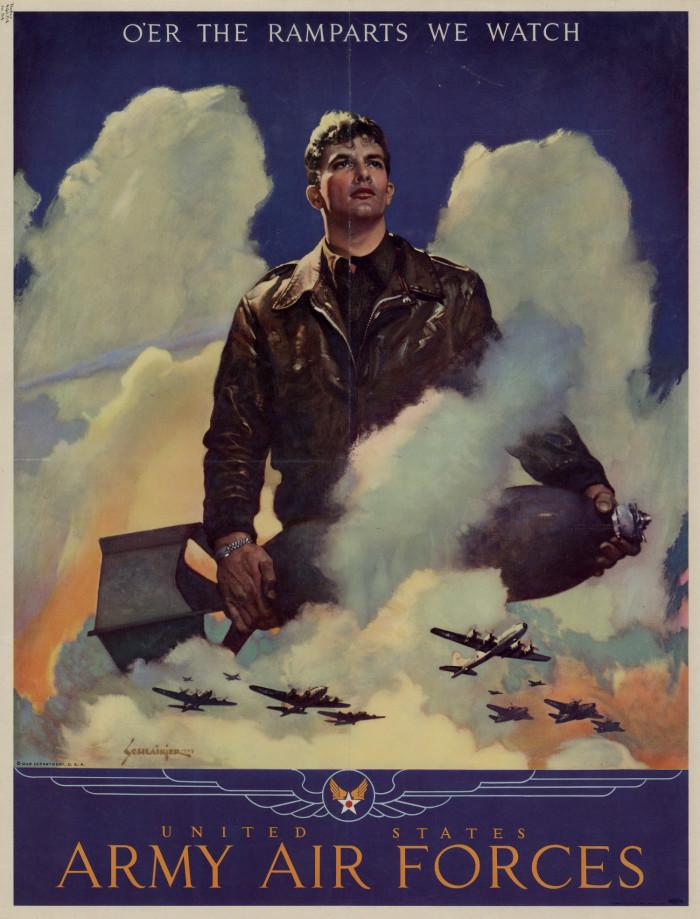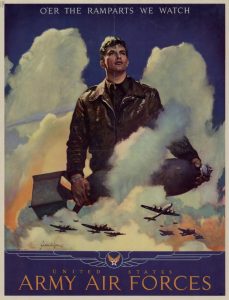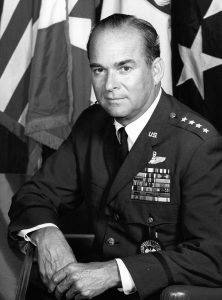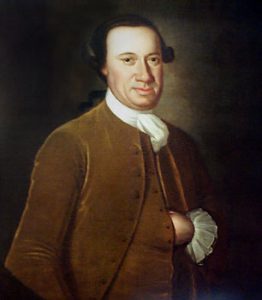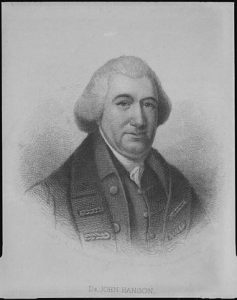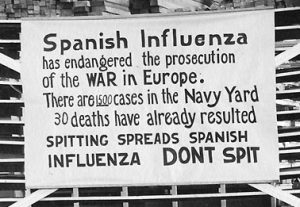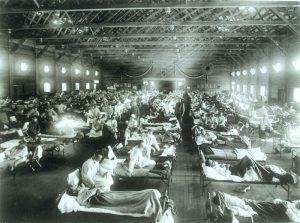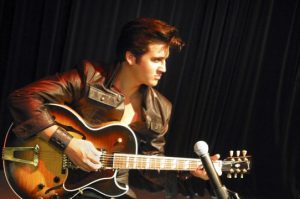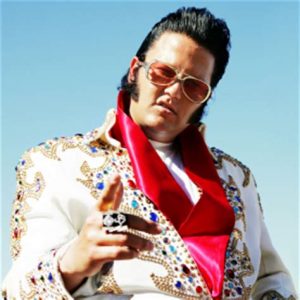By Suzanne Sparrow Watson
”Ladies and Gentlemen, this is your pilot speaking. I apologize for the late departure but this aircraft came from London and we’re missing one of the engines”. MISSING AN ENGINE??? How do you misplace an engine? This was not the start to our Ireland trip that I had imagined. But apparently it was “only” the tail engine so across the Atlantic we went. Of course, I didn’t sleep a wink, despite the lovely bed and a rather good glass of red wine. While my fellow slackers in the upper deck slept, I was on alert all night trying to detect further engine issues. At last, after too many hours to count and a second flight from London to Shannon, we arrived just in time for the spectacular sunset pictured (left). As we stopped to take the photo a Irishman commented, “Oh, that’s a good omen for your holiday.” And so our wonderful time in Ireland began.
Jack, our tour guide for the week picked us up the next morning for a drive to the beautiful Cliffs of Moher. In my previous post I spoke about Jack and the rave reviews he receives on Trip Advisor and this first outing proved why his reputation is so good. Rather than taking us to the Cliffs’ visitor center, filled with SIXTEEN tour buses and too many cars to count, he escorted us onto a private drive and introduced us to Martin Guerin. Martin and his family have farmed their land adjacent to the Cliffs for generations but have just recently started their touring business, Guerins Path (http://www.guerinspath.com/).
There are several benefits to viewing the Cliffs with Martin. The first is Martin himself, who is as charming and knowledgeable a person as one could hope to find. He gave us great insight into the history of the local area, including the legends of the Lost City of Atlantis and Hag’s Head, as well as describing the unique Liscannor stone that the region is famous for. Second is that he has given right of way to the visitor center for the path along the Cliffs, but he still owns it. So walking up the trail on his farm one ends up at the most spectacular spot on the whole of the Cliffs. It would be a 20 minute uphill walk from the visitor center to get to this spot. The third benefit is that if the weather is inclement or someone in your party is unable to walk up the trail, he can drive right up to the path. I can’t recommend him highly enough so if you’re planning on visiting the Cliffs of Moher, avoid the throngs of camera-clicking tourists and arrange a tour with Martin. You will thank me for it, trust me.
After visiting the Cliffs we were ready for some lunch and once again, Jack proved his worth. As we drove into the cute town of Doolin, we passed several bus loads of people lined up at restaurants. Jack drove us a few blocks further where we lunched with locals at McDermott’s Pub. The food was delicious and plentiful and it was here that I learned my travel mates love beer. I tried Guinness for the first time and fell in love with its dark, smoky flavor. I did recall someone told me that there were as many carbs in a pint of dark stout as a whole loaf of bread but I chose to chalk that up to an old wive’s tale.
Saturday morning Jack took us on a tour of the Ring of Kerry. Knowing his audience, he first stopped at the Kerry Woolen Mills, who have been spinning yarns for over 300 years and are one of two remaining woolen mills in Ireland. We loved the tour, which took us from the raw shearing to beautiful cones of yarn. They do custom weaving here as well and each piece was a work of art.
Jack finally dragged us away from the yarn and we continued the tour. The scenery around the Ring of Kerry is spectacular, which is why it is such a popular tourist attraction. There is nothing like it in the world. We stopped for lunch – and more Guinness – and viewed the Skelligs Islands, which were featured in the last Star Wars movie. The highlight of the afternoon was a stop at the Skelligs Chocolate factory where we felt it only polite to sample and purchase their wares.
Finally, back in Killarney we cleaned up and then walked to the Celtic Whiskey Bar and Larder for dinner. It turned out to be one of the best decisions we made – great food, great whiskey and beer sampling, and good people watching. And then on the way home, we just happened to stumble into Sheehan’s Pub where an Irish group was playing and the crowd of locals was welcoming. We sang and laughed with abandon for an hour.
Finally back at our hotel I had one thought: It should be illegal to have this much fun.

